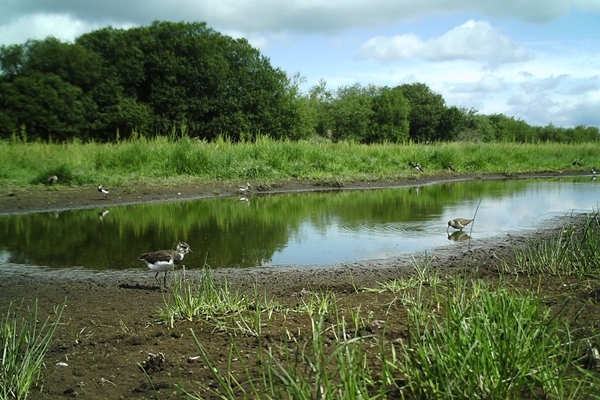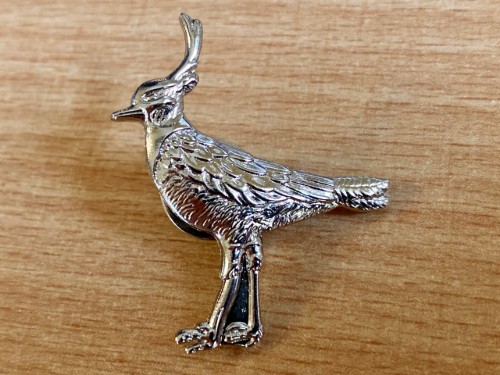 The efforts of Bisterne Estate in recovering their breeding lapwing (or pee-wit) was given national acclaim this month, with a “highly commended” ranking at the annual Purdey Awards for Game and Conservation, hosted by His Grace the Duke of Wellington at Apsley House in London.
The efforts of Bisterne Estate in recovering their breeding lapwing (or pee-wit) was given national acclaim this month, with a “highly commended” ranking at the annual Purdey Awards for Game and Conservation, hosted by His Grace the Duke of Wellington at Apsley House in London.
The 4,000-acre Hampshire estate is a partner in the Game & Wildlife Conservation Trust’s LIFE+ Waders for Real project, an EU-funded programme involving scientists, farmers and the local community working together to reverse the decline of breeding waders in the Avon Valley. Since 2015 they have seen annual productivity increase from 0.49 to 0.80 lapwing chicks fledged per pair (lapwing need to produce 0.7 chicks per pair to maintain a stable population). In plain words, that means the lapwing population is self-sustaining at Bisterne. The fact that the estate is bucking the national trend with a growing population of breeding lapwings is a real team effort, but starts with three people intent on making it a haven for waders.
 Lapwing and redshank taking advantage of the habitat features that have been added at Bisterne.
Lapwing and redshank taking advantage of the habitat features that have been added at Bisterne.
Hallam Mills, whose family have owned the land since 1792, has a passion for making Bisterne a conservation hotspot and has long subscribed to Higher Tier Stewardship. He encourages everyone involved in managing the estate to do so with conservation in mind. Martin Button, the Arable and Environmental Manager, has implemented conservation measures, resulting in good quality water meadow habitat, the right meadow grass length, nectar and pollen mixes, and improved soil quality. The success of their wading birds has been driven by gamekeeper Rupert Brewer, who having seen lapwing decline nationally by over 80% since 1960, was given the chance to do something about it, which he grabbed with both hands!
This is where the bigger picture comes into play. Lapwing need what the GWCT calls ‘the three-legged stool’ – a combination of food, habitat and protection from predators. Rupert is well-versed in the latter, but called upon experts at the GWCT to see what more could be done. The estate includes a vast array of landscapes, from water meadows to heathland, to pasture and woodland, so required some willing volunteers to make it a better home of lapwing. The GWCT used its connections with Sparsholt College to get students on board, and the partnership gave Rupert the help he needed in taking out any alders that made good lookouts for crows, but also gave the students a great practical education. Habitat restoration focusing on ditches and scrapes has increased important foraging habitat to save chicks from foraging too far.
The GWCT has been involved throughout the project, monitoring birdlife on the estate as part of the Waders for Real project, offering guidance and bringing local farmers together to share their experience and enthusiasm. Lizzie Grayshon, project lead on the Waders for Real project, is proud to note: “It is great to see Bisterne recognised in this way. The local lapwing population is doing better than we could have expected and that is down to the hard work and passion of those who know the land best. We can provide the research and the guidance, but it is only as good as those willing to make it work; Bisterne have shown what can be done.”
Owner Hallam Mills is quite clear that the project is a team effort: “Having the Head Keeper and the Arable/Environmental Manager work together helped us understand the importance of both wet meadows and drier arable fields. Even the dairy contributed to the success by ensuring that the cattle were in the right place at the right time. Above all, we really appreciate the practical, science-based approach of the Game & Wildlife Conservation Trust. Their observations and brainpower have helped us and the lapwings enormously.”
As a local success story, all involved at Bisterne are keen to share the fruits of their labour. Rupert is keen to educate the community about the work that has been done and created a public area on the edge of the water meadows where people are invited to come see for themselves. Their annual Open Farm Sunday event brings in 4,000 visitors, hopefully inspiring the next generation of conservationists in Hampshire.

Get your GWCT Lapwing Badge for £9.99
£5 from the sale of each badge goes directly to our Wader Tracking Appeal
You can support our biggest tracking project yet and help curlew, lapwing and woodcock with our brand new lapwing pin badge. £5 from the sale of each badge goes toward this vital project. Badge measures approx 3cm x 3.5cm.
View Badge >
or
Buy Now - £9.99 >
100% Secure. All Credit & Debit cards, PayPal, Apple Pay and Google Pay accepted.

Notes to editors
The Game & Wildlife Conservation Trust – providing research-led conservation for a thriving countryside. The GWCT is an independent wildlife conservation charity which has carried out scientific research into Britain’s game and wildlife since the 1930s. We advise farmers and landowners on improving wildlife habitats. We employ more than 60 post-doctoral scientists and other research staff with expertise in areas such as birds, insects, mammals, farming, fish and statistics. We undertake our own research as well as projects funded by contract and grant-aid from government and private bodies.
For information, contact:
Eleanor Williams
Telephone: 07592 025476
Email: press@gwct.org.uk